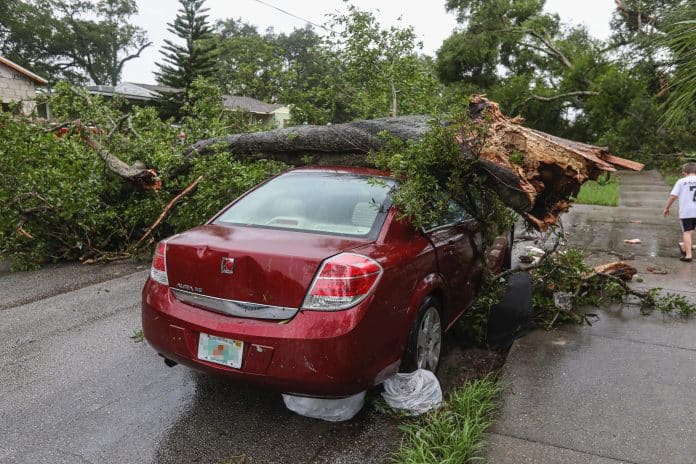By Brad Buck, UF/IFAS
When assessing trees, arborists normally examine dozens of visual defects to determine which trees pose an unacceptable risk of “failure” — for example, falling or uprooting. A tree with visible defects does not necessarily mean it will fall during a hurricane, says Andrew Koeser, a UF/IFAS associate professor of environmental horticulture. Courtesy, Andrew Koeser.
For the new study, UF/IFAS researchers surveyed trees with three defects — just two weeks after Hurricane Ian in 2022. Scientists studied branches that stick out beyond the rest of the crown, trunks that split into two equal size stems and multiple branches that connect to the trunk all at the same point.
These growth patterns tend to be seen as weaknesses by tree care professionals, but few studies have assessed if they are too weak to survive a storm. “We looked at past research (including our own) and noticed these defects never predicted failure. This surprised us, so we decided we would only look at these three conditions when the next hurricane hit,” said Andrew Koeser, a UF/IFAS associate professor of environmental horticulture.
That next hurricane struck Florida on Sept. 28, 2022. Koeser, a faculty member at the UF/IFAS Gulf Coast Research and Education Center and his team started examining trees in Hillsborough County parks.
By the time it swept through Hillsborough County, Ian’s strength had lessened to a tropical storm with top winds of 60 mph – a wind speed you would expect a sound tree to be able to weather. Researchers surveyed 1,518 trees and found the storm broke branches on only 14 trees, or less than 1%. No trees fell or were uprooted. This mirrors some of Koeser’s prior research. In a survey of the Naples area after Hurricane Irma in 2017, he led a team that found about 75% of trees sustained no damage.
Despite these data, people should protect against potential tree damage when a tropical storm or hurricane is approaching, Koeser said.
“Our study was conducted in managed areas in a county park system, so the spacing of the trees and their care were very similar to what you would likely see in a residential setting,” he said. Furthermore, some defects like dead branches, big holes in the trees’ trunks and recently uprooted trees that lean have been tied to tree failure in hurricanes, said Koeser.
“Those defects are the ones people should look out for,” he said.

